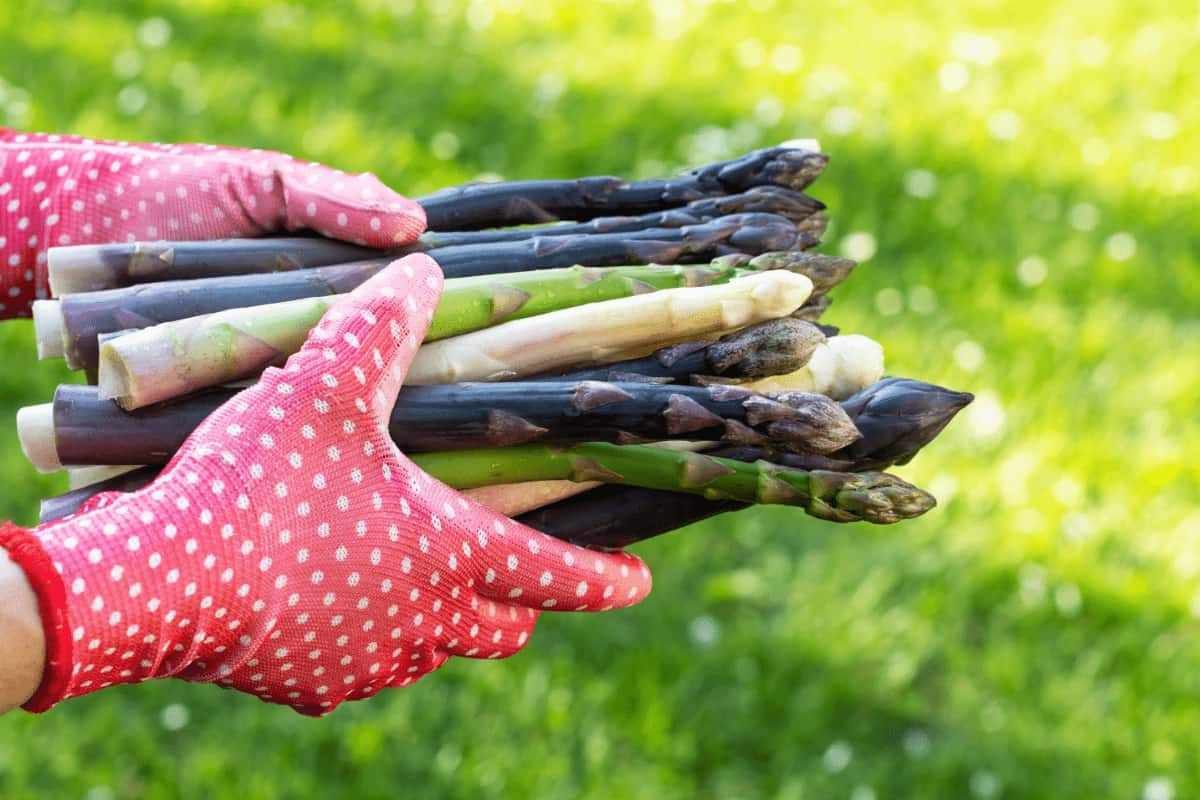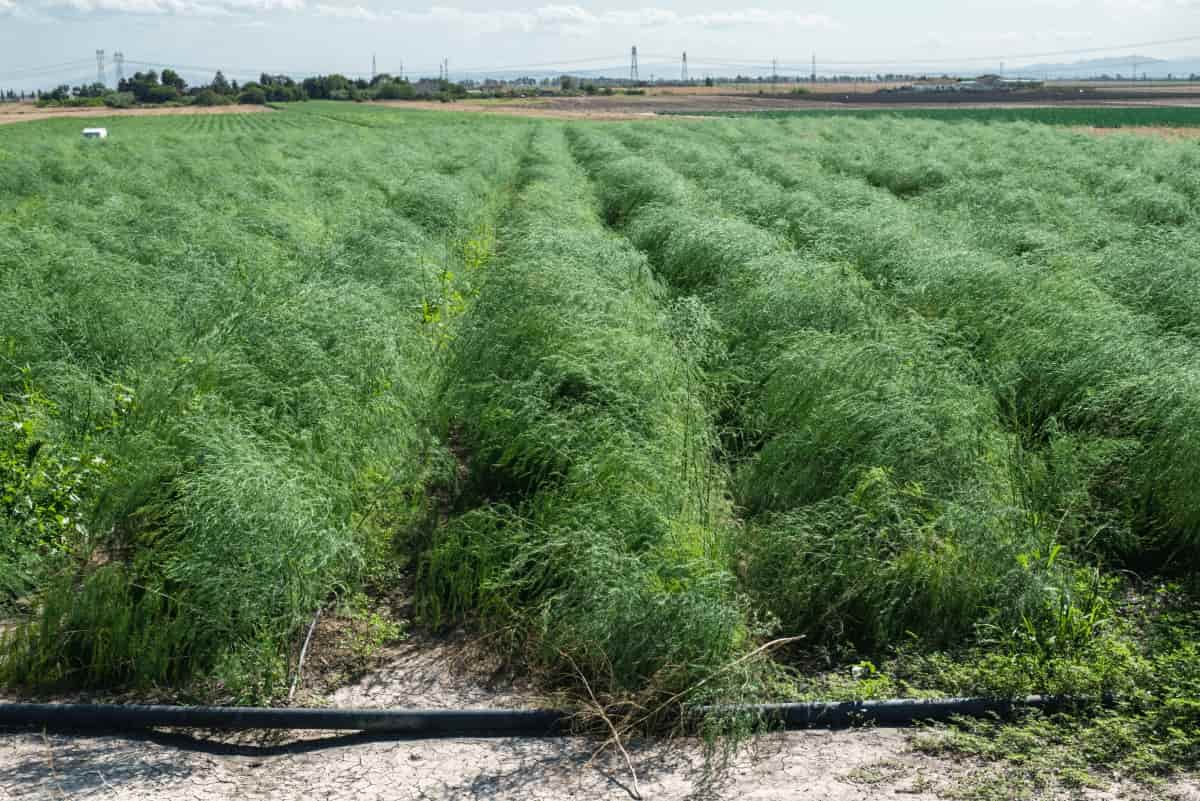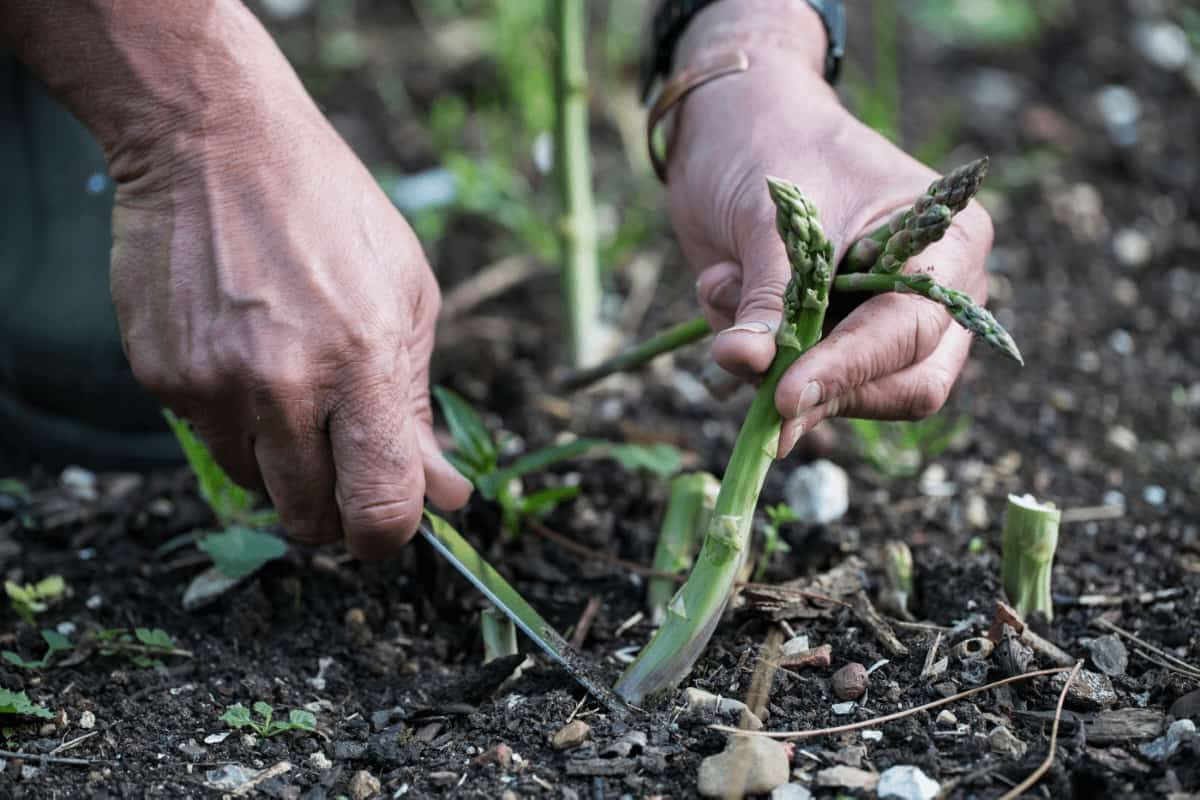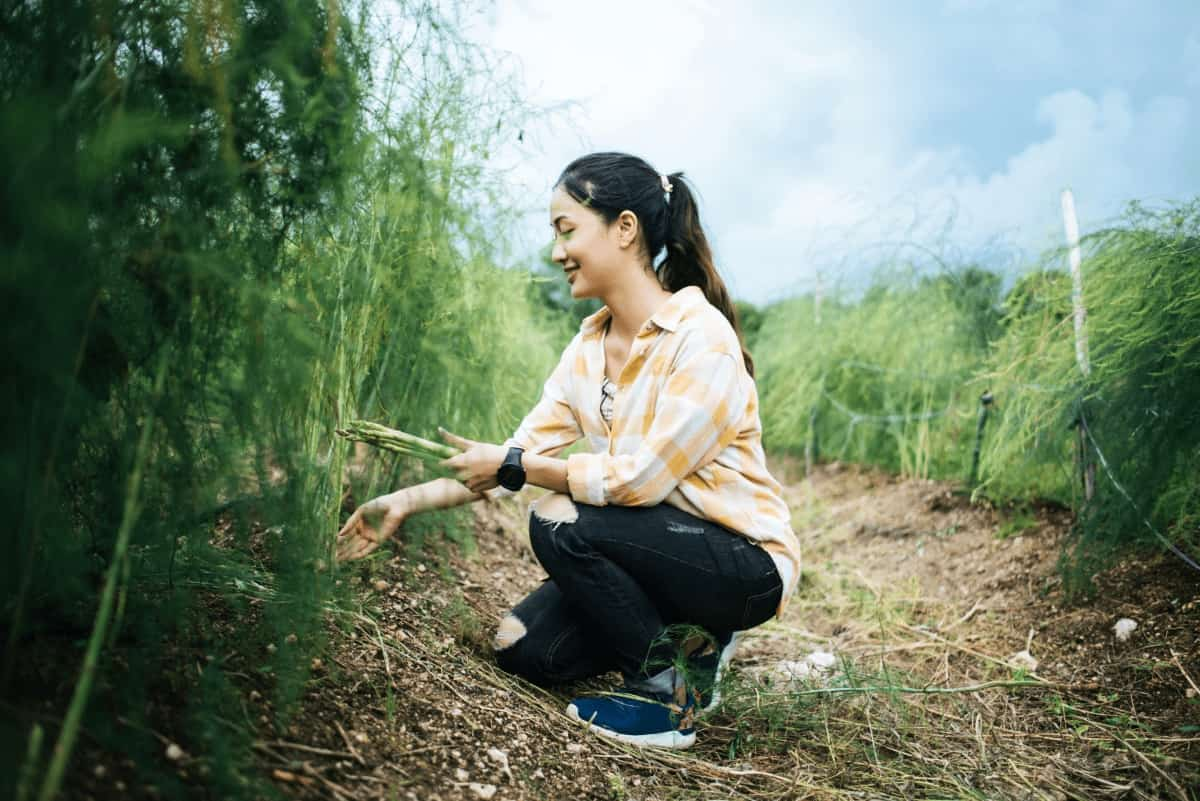Asparagus cultivation has been a part of gardening for centuries due to the unique flavor and nutritional value it adds to our diet. While growing asparagus may seem simple, various factors play a role in the health and yield of your asparagus crop. Among these factors is the selection of appropriate asparagus companion plants. Companion plants for asparagus are strategically grown together to yield the best results, typically ranging from pest deterrence to improved soil fertility.

It’s essential to understand what grows well with asparagus and what you should not plant next to it to maximize your crop’s potential. With this in mind, we delve into the asparagus companion plants’ benefits, their roles in organic gardening, pest control, improved pollination, soil fertility, and the enhancement of raised beds and containers.
Benefits of Companion Plants for Asparagus in the Garden
Companion planting is an age-old gardening technique that involves growing certain plants together for mutual benefit. The benefits of asparagus companion plants in the garden are numerous, offering a natural, organic solution to many common gardening problems.
These companion plants provide an aesthetic appeal and assist in pest management, improving soil health, encouraging pollination, and increasing the yield of asparagus crops. Companion planting for asparagus is essential for sustainable and effective gardening practice, fostering a healthy and productive asparagus patch by bolstering biodiversity within the garden ecosystem.
Best Companion Plants for Asparagus to Deter Pests
Dealing with pests is a common challenge faced by all gardeners. The best companion plants for asparagus for pest deterrence include marigolds, parsley, basil, and tomatoes. Marigolds have a strong aroma that repels many common pests, while parsley and basil attract beneficial insects that prey on pests. Tomatoes also play a vital role in deterring asparagus beetles, a common threat to asparagus crops. In contrast, you need to be aware of the bad companion plants for asparagus, such as garlic, onions, and potatoes, which can encourage the growth of harmful pests and hinder the development of asparagus.
Asparagus Companion Plants for Improved Pollination
Increased pollination is one of the Asparagus companion herbs. Growing tomatoes, parsley, and comfrey alongside asparagus attracts pollinators such as bees, butterflies, and other helpful bugs. These pollinators are crucial to the overall growth and reproduction of asparagus plants, enhancing their yield.
Companion Plants for Asparagus in Containers
Growing asparagus in containers has gained popularity in recent years due to space constraints and its ease of gardening. Good companion plants for asparagus in containers include smaller herbs like basil, parsley, and dill. These herbs not only assist in pest control but also make good use of the vertical space in the container, thus maximizing the yield. However, ensure these companion plants for asparagus are not overly invasive, which might otherwise crowd out the asparagus.
In case you missed it: 12 Common Problems With Asparagus Plants: Treatment and Solutions

Companion Herbs for Asparagus in Organic Gardening
Companion herbs for asparagus can significantly enhance your organic gardening efforts. Herbs like basil, parsley, and dill benefit asparagus, providing aromatic scents that can deter pests and attract beneficial insects. Moreover, these herbs require similar growing conditions as asparagus, making them perfect partners in an organic garden. This companionship effectively fosters healthy, pest-free, and high-yield asparagus crops, aligning perfectly with the goals of organic gardening.
Flowering Companion Plants for Asparagus to Attract Beneficial Insects
Consider integrating flowering companion plants to attract beneficial insects to your asparagus patch. Plants such as marigolds, nasturtiums, and calendula add to your garden’s visual appeal and lure useful insects that act as natural pest controllers. These insects include ladybugs, hoverflies, and lacewings, which prey on harmful pests that would otherwise damage the asparagus. So, these flowering plants serve dual roles – beautifying your garden and acting as a natural defense against pests.
Companion Vegetables for Asparagus in Raised Beds
If you are using raised beds for your asparagus cultivation, there are specific companion vegetables you should consider. Tomatoes, parsley, and basil are good choices as they deter pests and promote a healthier growth environment for asparagus. On the other hand, vegetables like garlic and potatoes are bad companion plants for asparagus in raised beds. They compete for the same nutrients and attract pests that could harm the asparagus plants.
In case you missed it: How to Grow Asparagus Hydroponically: A Step-By-Step Guide

Companion Plants for Asparagus to Improve Soil Fertility
Improving soil fertility is crucial for a bountiful asparagus harvest. Companion plants like comfrey and beans can enrich the soil with essential nutrients, helping asparagus plants thrive. Comfrey is known for its deep root system, which brings up nutrients from the subsoil, benefiting the shallow-rooted asparagus. On the other hand, beans are legumes that fix nitrogen in the soil, a nutrient vital for asparagus growth.
Companion Plants Chart for Asparagus in the Garden
For a quick reference, here’s a companion plants chart for asparagus in the garden: Good companions include marigold, parsley, basil, tomatoes, comfrey, beans, nasturtiums, and calendula. On the other hand, the ones to avoid include garlic, onions, and potatoes. This chart is a simple guide to help gardeners make the best decisions regarding companion planting for asparagus.
Managing Water Needs with Companion Plants for Asparagus
Asparagus is a plant that prefers well-drained soil and moderate moisture. Certain companion plants like marigolds and nasturtiums can play a crucial role to ensure proper water management. These plants are drought-resistant and can thrive in similar water conditions as asparagus. They help retain the soil’s moisture content without waterlogging, making them an excellent choice for asparagus companion plants. Incorporating such plants can reduce water stress on the asparagus, promoting its healthy growth and increasing yield.
Companion Plants for Asparagus for Disease Resistance
A key benefit of asparagus companion plants includes disease resistance. Many companion plants have properties that deter various diseases common to asparagus. Marigolds can protect asparagus roots by repelling nematodes, tiny worms that target them. Tomatoes resist Fusarium wilt, a soil-borne fungal disease affecting asparagus. By strategically choosing companion plants for asparagus, you can increase your garden’s overall disease resistance, ensuring a healthy and fruitful harvest. This strategy, integrated with the other aspects of companion planting, contributes to a resilient and productive asparagus garden.
In case you missed it: Swiss Chard Companion Plants: Benefits, What and What Not to Grow with Swiss Chard

Conclusion
Selecting the right asparagus companion plants is an art that combines knowledge and observation. These companion plants offer a natural way to deal with common gardening challenges, promoting healthier growth, better yields, and a more sustainable approach to gardening. With the correct combination, your asparagus garden will be a bounty of produce and a vibrant ecosystem of symbiotic relationships.
- Feed Your Flock for Less: Top 10 Tips to Save on Chicken Feed
- Ultimate Guide to Ossabaw Island Hog: Breeding, Raising, Diet, and Care
- Hatching Answers: The Top 10 Reasons Your Chickens Aren’t Laying Eggs
- Eggs and Economics: Breaking Down the Cost of Raising Backyard Chickens
- Defend Your Greens: Proven Methods to Keep Iguanas Out of Your Garden
- Ultimate Guide to Cinnamon Queen Chicken: A Comprehensive Guide for Beginners
- Ultimate Guide to California Tan Chicken: Breeding, Raising, Diet, Egg-Production and Care
- Ultimate Guide to Marsh Daisy Chicken: Breeding, Raising, Diet, and Care
- 10 Types of Chicken Farming Businesses You Can Start for Profits